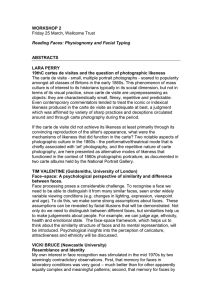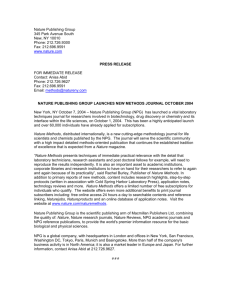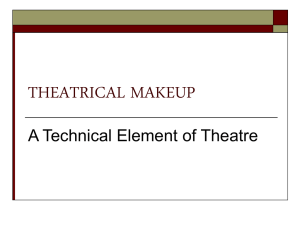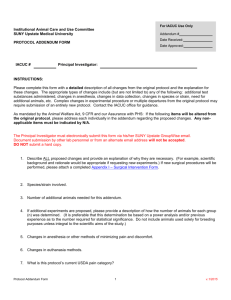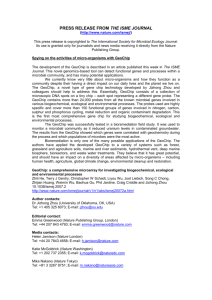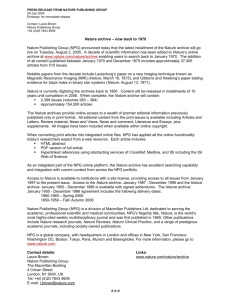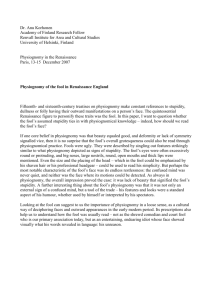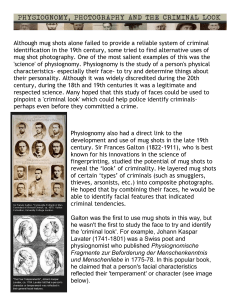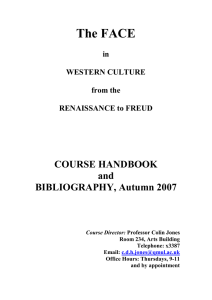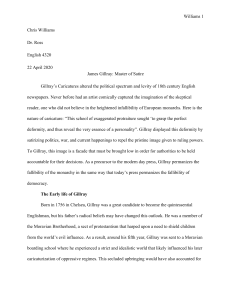Hands-On Heads
advertisement
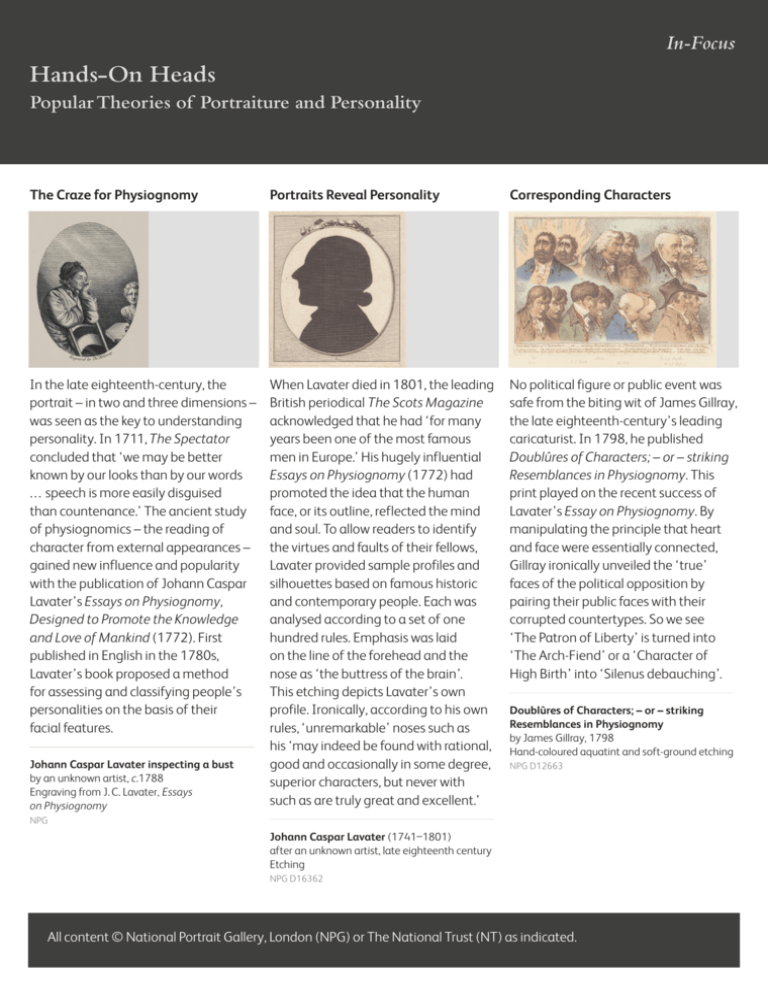
In-Focus Hands-On Heads Popular Theories of Portraiture and Personality The Craze for Physiognomy Portraits Reveal Personality Corresponding Characters In the late eighteenth-century, the portrait – in two and three dimensions – was seen as the key to understanding personality. In 1711, The Spectator concluded that ‘we may be better known by our looks than by our words . . . speech is more easily disguised than countenance.’ The ancient study of physiognomics – the reading of character from external appearances – gained new influence and popularity with the publication of Johann Caspar Lavater’s Essays on Physiognomy, Designed to Promote the Knowledge and Love of Mankind (1772). First published in English in the 1780s, Lavater’s book proposed a method for assessing and classifying people’s personalities on the basis of their facial features. When Lavater died in 1801, the leading British periodical The Scots Magazine acknowledged that he had ‘for many years been one of the most famous men in Europe.’ His hugely influential Essays on Physiognomy (1772) had promoted the idea that the human face, or its outline, reflected the mind and soul. To allow readers to identify the virtues and faults of their fellows, Lavater provided sample profiles and silhouettes based on famous historic and contemporary people. Each was analysed according to a set of one hundred rules. Emphasis was laid on the line of the forehead and the nose as ‘the buttress of the brain’. This etching depicts Lavater’s own profile. Ironically, according to his own rules, ‘unremarkable’ noses such as his ‘may indeed be found with rational, good and occasionally in some degree, superior characters, but never with such as are truly great and excellent.’ No political figure or public event was safe from the biting wit of James Gillray, the late eighteenth-century’s leading caricaturist. In 1798, he published Doublûres of Characters; – or – striking Resemblances in Physiognomy. This print played on the recent success of Lavater’s Essay on Physiognomy. By manipulating the principle that heart and face were essentially connected, Gillray ironically unveiled the ‘true’ faces of the political opposition by pairing their public faces with their corrupted countertypes. So we see ‘The Patron of Liberty’ is turned into ‘The Arch-Fiend’ or a ‘Character of High Birth’ into ‘Silenus debauching’. Johann Caspar Lavater inspecting a bust by an unknown artist, c.1788 Engraving from J. C. Lavater, Essays on Physiognomy Doublûres of Characters; – or – striking Resemblances in Physiognomy by James Gillray, 1798 Hand-coloured aquatint and soft-ground etching NPG D12663 NPG Johann Caspar Lavater (1741–1801) after an unknown artist, late eighteenth century Etching NPG D16362 All content © National Portrait Gallery, London (NPG) or The National Trust (NT) as indicated. In-Focus Hands-On Heads Popular Theories of Portraiture and Personality The ‘Science’ of Phrenology Bless Me what a Bump Phrenology and Portraiture IMAGE NOT AVAILABLE A number of painters and engravers subscribed to the first English edition of Lavater’s Essays on Physiognomy (1788 – 9), but there were few if any sculptors on the list. It was only a generation later that a new branch of physiognomical study – phrenology – was applied to the three-dimensional portrait. In the 1790s, the German doctor Franz Joseph Gall (1758 –1828) proposed the separation of the mind into more than thirty distinct ‘faculties’ that corresponded with specific parts of the brain. His theories were popularised in Britain by Johann Caspar Spurzheim (1776 –1832) in the 1810s. Franz Joseph Gall (1758 –1828) by an unknown artist, 1805 or after Engraving NPG D21608 Gall promoted the idea that a person’s moral and intellectual capacities were controlled by different organs which made up the brain. The size of each organ determined the skull’s shape and caused swellings and depressions on the head. Although Gall and Spurzheim resented the way their system was treated as ‘an art of prognostication’, the practice of reading a person’s character from the ‘bumps’ on their head became a craze in scientific and popular circles. This satire – Bless me what a Bump – may represent domestic fun, or one of the ‘phrenological parlours’ which people visited to have their bumps ‘read’. The marked-up phrenological bust on the table shows how knowledge of this pseudo-science was spread during the nineteenth century. There is little evidence that people read the bumps on sculpture, but some life-masks were taken seriously by phrenologists. James Deville (1776 – 1847) was a sculptor, a publisher of marked-up phrenological busts and the owner of a museum of phrenological casts. He made this plaster life-mask of the artist William Blake to be ‘representative of the imaginative faculty’. As was often the case with life masks cast directly from the subject’s face, it was a disappointing likeness. But Blake’s head was highly regarded by his friend George Richmond who believed that his distinctive domeshaped head and small, low-set ears indicated Blake’s inner wisdom. William Blake (1757–1827) by James S. Deville, before 1823 Plaster NPG 1809 Bless me what a Bump by an unknown artist, c.1820 –30 Hand-coloured etching © Science Museum All content © National Portrait Gallery, London (NPG) or The National Trust (NT) as indicated.
